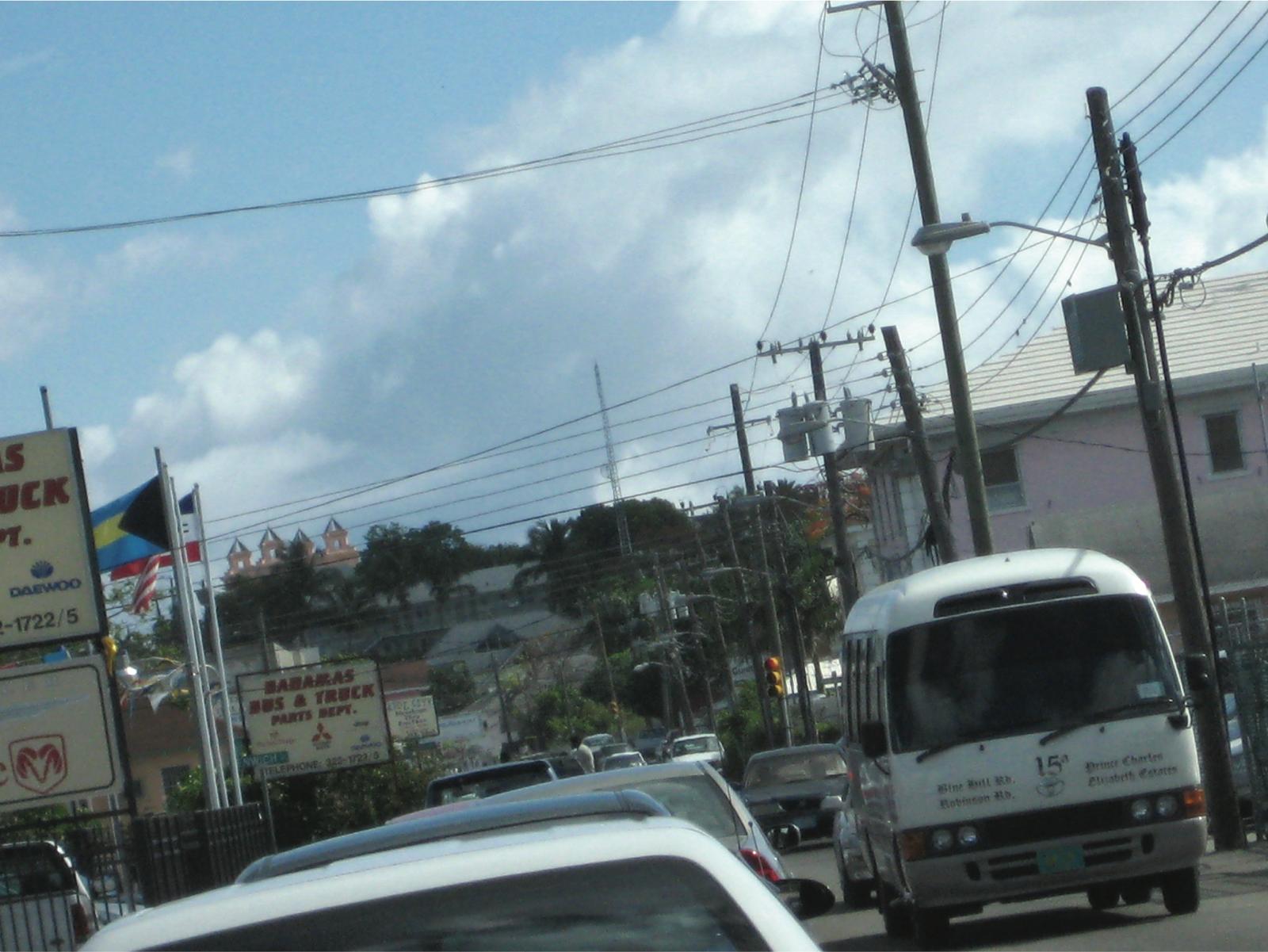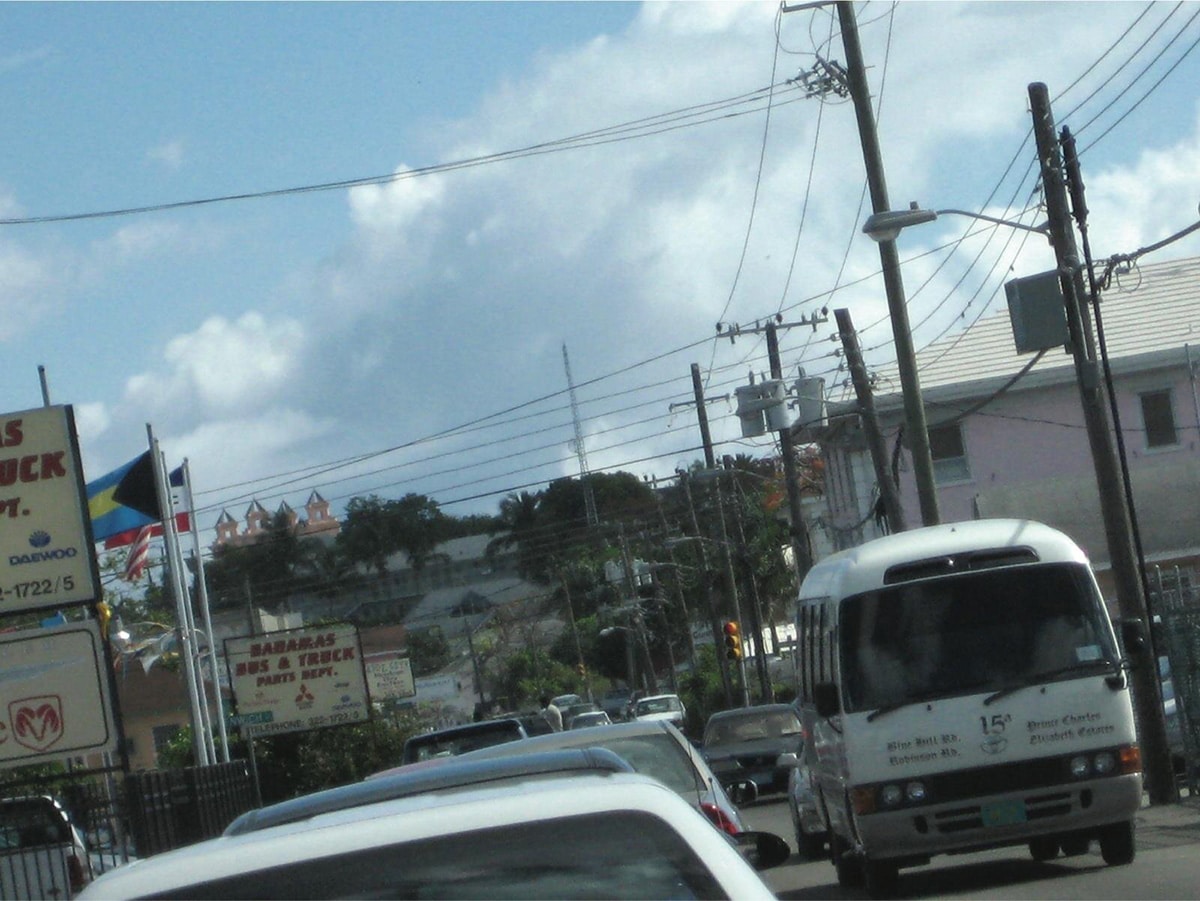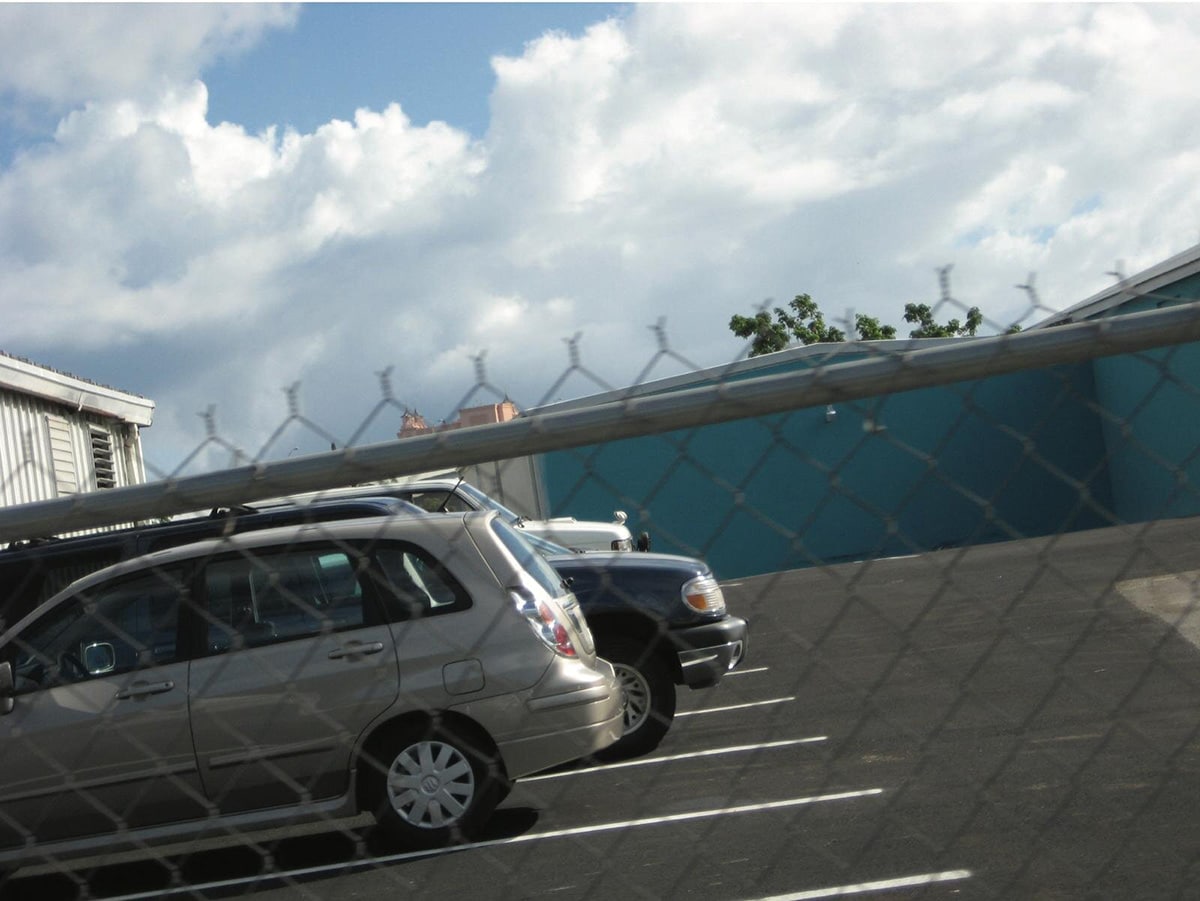From the Collection: “North Star” (2007-8) by Heino Schmid

By Natalie Willis
Landmarks are such a common way to give directions we often think nothing of it. In some cities it could be the tallest building, in most, it was historically a cathedral as it was in old Nassau, and in others still an old water tower. Landmarks hold significance, they become a fixed point of reference that we navigate around or through, often in the periphery just so that your little satellite of a body knows where it is in relation to this sentinel. Heino Schmid’s video artwork “North Star” (2007-8), first shown as part of NE4, the Fourth National Exhibition back in 2008, gives us a moment to consider the significance of having the imposing and distinctive structure of the Atlantis hotel as a marker within our landscape.

Video still of “North Star” (2007), Heino Schmid, video, 4 minutes 18 seconds. Part of the National Collection, acquired from the 4th National Exhibition (NE4).
The video is short, only around 4 minutes, and the content feels questionable at first: it’s bumpy, it’s a car ride, there are random songs blasting through the radio from rock to reggae, and sometimes we see outside of a window at a jaunty angle. It could run the risk of feeling unconsidered except for one small, peachy pink detail: the image of the Atlantis resort is in every single shot. Schmid says that this hotel, located on Paradise Island, off the North coast of New Providence, is our North Star – and that is something to consider. Day or night, no matter where you are on the island, you will come over the crest of a hill and this is what you see to get your bearings. Having a Paradise Island hotel (and let us not forget this island’s former name, Hog Island, was changed as that wasn’t quite so popular for enticing tourists), with its lack of accessibility to everyday Bahamians, with its access being blocked off by a toll booth, with the profiling that happens upon finally entering the space – what does this say about the way we move about in our lives as people of The Bahamas?
Let us also first consider the moment in which this work was made, for context. The Third National Exhibition (NE3) in 2006 was a watershed moment for Bahamian art in many ways – from the heated discussions around what could be considered art (or not), to commentary on migrant workers, to video art as a medium, there was much rich ground to till. It is not surprising then, that from having a single video work in 2006, we then saw several in 2008 at the Fourth National Exhibition (NE4) as the technology was, and continues to, become more and more available and affordable to the masses.
This was, however, also at the start of the financial crisis and banking collapse of 2008, the Great Recession. So, in the conservatism around Bahamian art being picturesque, “easy on the eye”, and the implications of it being easy to sell, we also see the way that conservative views around capitalist, conventional, and appealing notions of development were being played out in the Bahamian landscape. We have housed a tourism industry that is almost 200 years old and, in that time, it has managed in some ways to keep us afloat as a country, but it has never been a way for the wider, majority Black, populace to thrive. What did it mean to have this gaudy structure as a beacon and lighthouse to guide? Questions around sustainability and development were ripe in the imagery, especially with the juxtaposition of beat-up cars in Nassau dotted between the mounds of limestone earth dug up throughout the island in the name of “development”. Development for development’s sake does not serve anyone in the long term, our forward-thinking Afro-future requires a different solution, and Schmid’s succinct video shows us this through the pervasiveness of this imposing, and some would say neocolonial, structure in our everyday.

Video still of “North Star” (2007), Heino Schmid, video, 4 minutes 18 seconds. Part of the National Collection, acquired from the 4th National Exhibition (NE4).
Fast forward just over a decade, and we are re-engaging with this, Schmid’s “North Star”, in a context that, while different in some ways, remains hauntingly similar. Though the work was made originally as a way to process his walks and drives around the island, using a much bulkier kind of camera than we see nowadays with the ubiquitous iPhone snapchat videos from the passenger seat that take up so much space on our beloved (and loathed) interwebs, now it holds a new sort of significance for us. And by significance, I mean a sore spot – a sore, dark, load-shedding kind of spot.
Included as part of The Bahamas’ iteration of “The Visual Life Of Social Affliction” (VLOSA) Small Axe Project Exhibition, we have Schmid’s “North Star” in conjunction with the commissioned works by other Bahamian and Caribbean artists. Dr Erica Moiah James, one of the curators of the exhibition and founding Director of the NAGB, gave some pointed context on the way that “North Star” functions 11 years on: “While the metaphorical, geographical, and cultural implications of this shift from a religious to a capitalist centre were always apparent, Schmid could not have imagined the irony of the present moment, when as the country’s electrical grid degrades, unable to supply all the needs of the island at the very same time, often the only lights on the island are those generated at the mega resorts of Atlantis in the North and now Baha Mar in the West, expanding the association of the resort as a guiding light in a literal way.”
As New Providence continues to be our epicentre of development for the nation – problematic or not – we must contend with this North Star not just because of its size but because the hotels here are some of the few places that have power when most of us are left in the hot hellish dark. Personal generators are a privilege, and that is ludicrous in a space that has the infrastructure to somehow sustain multiple hotels. Atlantis is the north star, and Baha Mar is the west star. The problem with the redirecting and diverging of resources towards the tourist centers throws our issues with infrastructure (and prioritising or not prioritising citizens) into a sharp relief you can see no matter how dark it is.